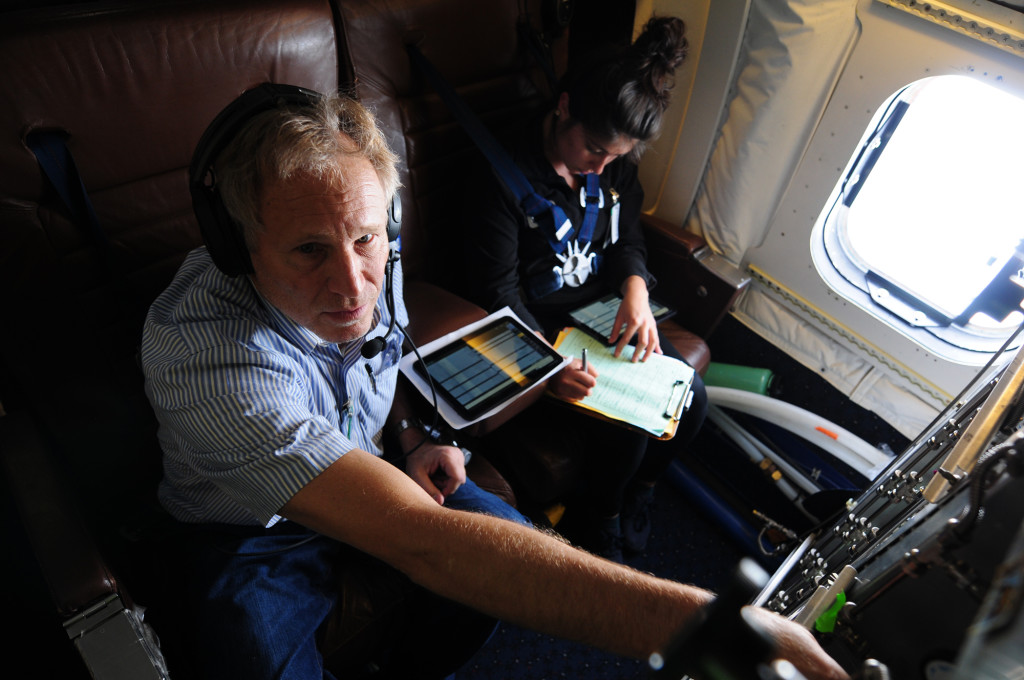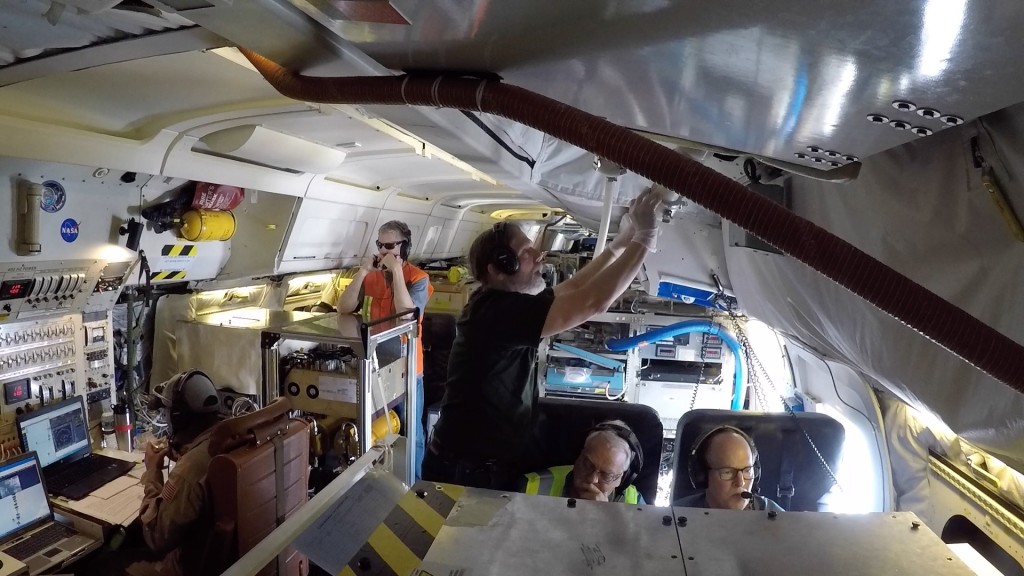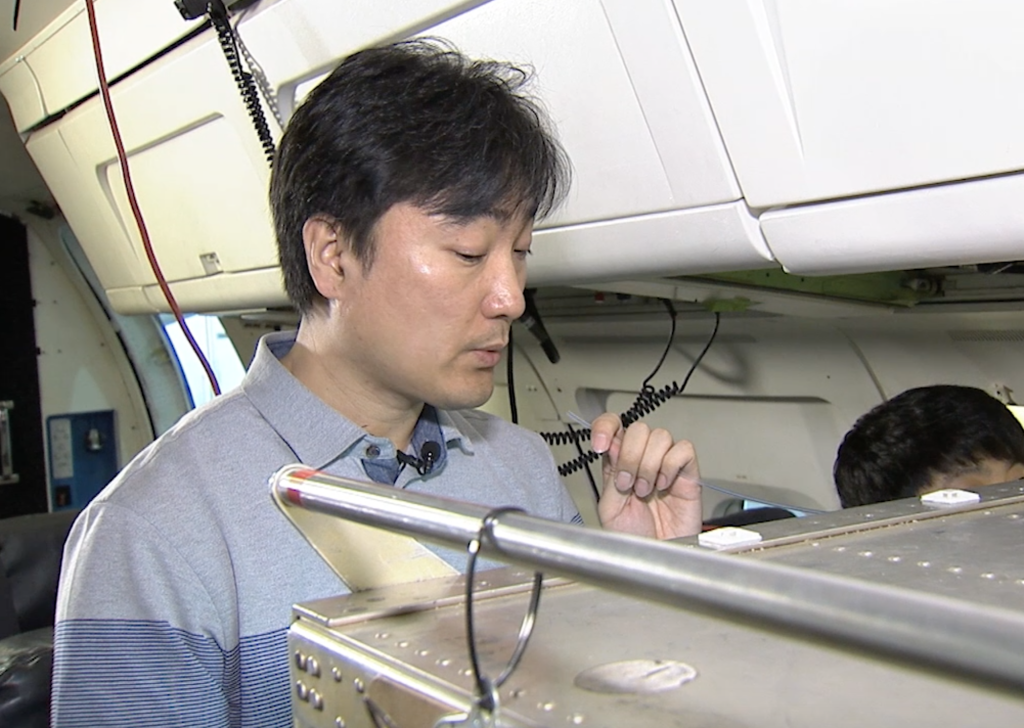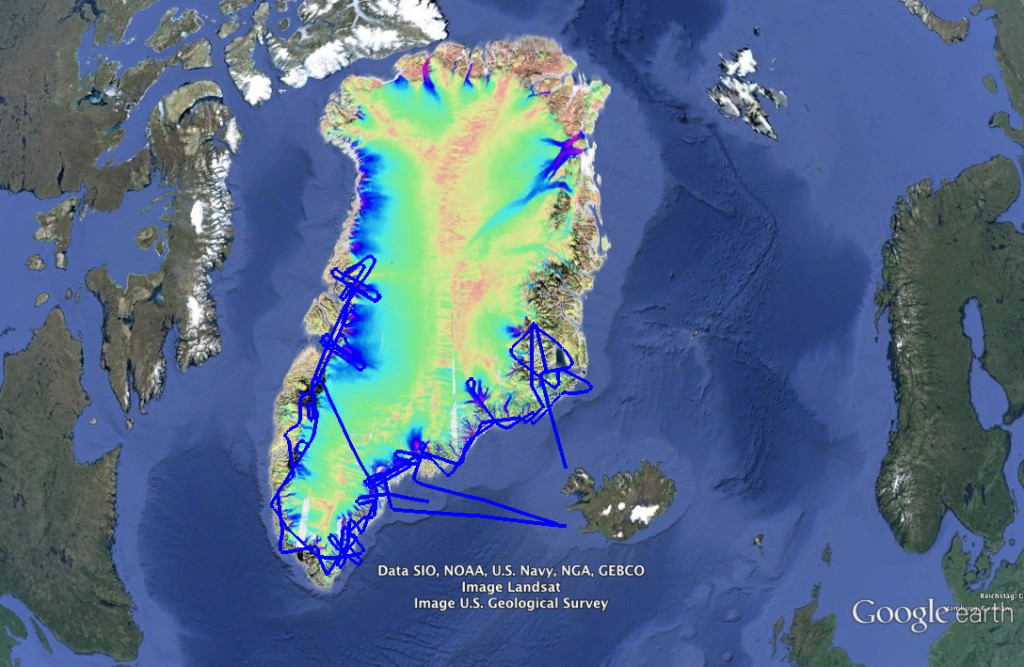
by Denise Lineberry / ST. JOHN’S, CANADA /
On Friday, May 13, Shane Tungate, the aircraft loadmaster, provides a safety briefing to some of the NAAMES, or North Atlantic Aerosols and Marine Ecosystems Study, team members at NASA’s Langley Research Center, who are preparing to board the C-130 for St. John’s International Airport, Newfoundland. Before the team even gets the chance to get seated, someone hollers out, “Power down!”
An invertor replacement is needed for the engine. At NASA’s Wallops Flight Facility, located on Virginia’s Eastern Shore, someone hops in a golf cart to hunt down a replacement from a non-flyable “parts plane.” The part is found and the B-200 flies it some 75 miles from Wallops to Langley. The part is replaced, and the C-130 flight is three hours behind scheduled takeoff, but preparing for flight.
NAAMES is in the field this month on the second of four deployments. About half the carbon dioxide emitted into Earth’s atmosphere each year ends up in the ocean, and plankton absorbs a lot of it. NAAMES studies the world’s largest plankton bloom and how it gives rise to small organic particles that leave the ocean and end up in the atmosphere, ultimately influencing clouds and climate. This month coincides with a critical phase of the bloom. Researchers will take measurements by sea and by air from St. John’s.
Not much is conventional about a ride on NASA’s C-130. The seat belt buckle looks a little like it’s from medieval times. Some walls are covered in diamond-stitched liner and many stretches and bundles of cords line the sides and top of the aircraft’s interior. Window seats are not an option since the only windows are on the aircraft’s three doors and in the cockpit.

When in flight, the cockpit’s room temperature is about 70 degrees F. The middle of the plane, where a majority of the team is seated, is about 60 degrees F. The back of the plane, occupied by items such as water and luggage, is about 30 degrees F.
The takeoff is smooth and the team’s screens immediately begin to light up with colorful data plots from instruments on board the C-130, such as the GCAS (GeoCAPE Airborne Simulator) and AMS (Aerosol Mass Spectrometer).
It is a nonstop transit flight with the end goal of getting the team to St. John’s to start planning science flights in coordination with the R/V Atlantis. However, the scientists are so anxious to get data that they set up some scientific detours along the way.
Remote sensing instruments on board the C-130 gather color gradient measurements, from the clear water in the Albemarle Sound to the most productive ocean water in the world in the North Atlantic.
“You can see a distinct change in ocean,” one team member says over the aircraft’s communication system as we pass from one gradient to another.
The C-130 also spirals down over Sable Island, just southwest of Newfoundland. From the cockpit, the surface water goes from flat to angled, flat to angled, as the pilots circle the aircraft lower. The island comes in and out of sight, along with the sun and a pod of seals hopping in and out of the water. It’s such a beautiful view and a surprisingly pleasant circling descent that it’s almost easy to forget this maneuver has a scientific purpose — Sable Island is home to a ground observation site that double-checks the accuracy of aerosol measurements being made on the C-130.
“This looks like an ideal spot,” says NASA Langley scientist Ewan Crosbie over the C-130 telecom.
“Roger that,” says NAAMES Deputy Project Scientist Rich Moore.
“Beginning descent,” the pilot communicates.
They are descending into a “box,” or identified and secured airspace, that was specifically mapped out to test a new instrument that samples cloud water from low-level, warm clouds.

The grand finale of the transit flight includes an overpass of the R/V Atlantis in the North Atlantic. The comparison and combination of the shipborne and airborne measurements are the bread and butter of the NAAMES mission. And this initial flight over the Atlantis marks the first of several that will take place over the next few weeks to better understand the ocean-atmosphere interaction.
In the moments before landing, Moore calls out to the instrument teams for checks before powering down the aircraft. All instruments gathered data and the team is delighted to have such clear conditions to measure — thanks to the NAAMES meteorologists who forecasted that leaving a day earlier than planned would be best for the instrument teams.
Weekend plans in St. John’s for NAAMES involve aircraft and instrument maintenance, weather forecasting and flight planning for the first official science flight, tentatively scheduled for Tuesday, May 17.


































